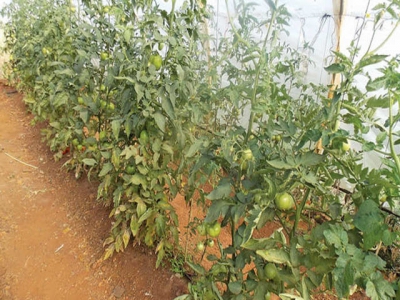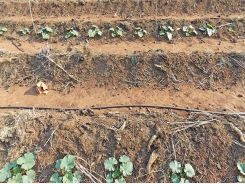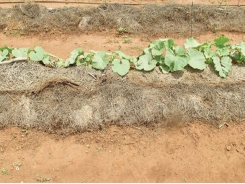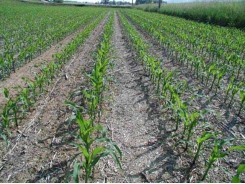Theres more to crop rotation than meets the eye

Just about every farmer would agree that crop rotation is a good thing – and the more diverse the crops in the rotation, the better.
These young tomatoes are planted in a tunnel used for 14 consecutive years for tomatoes. During that time, the soil has never been fumigated or had chemicals added to it – it is healthy and organic. This is a variety trial, hence the different- sized plants. Photo: Bill Kerr
For this reason, we plant a root crop followed by a leafy crop followed by a fruiting crop followed by a legume. Right?
Unfortunately, it’s not quite as simple as that.
Let’s take an example where a farmer plants Swiss chard and follows this with carrots, which are not remotely related to Swiss chard. Then he plants a legume, beans, to contribute nitrogen to the soil. They are also unrelated to the other crops. Finally, he plants marrows.
This diversity should, in theory, make this selection perfect for a safe rotation. The reality is that such a combination is a recipe for disaster.
All the crops mentioned have a common problem: they are good hosts for root knot eelworm (Meloidogyne spp.).
An infestation need not be the end of the crop, though. You can use fumigation or crop chemicals when required and one of the crops can be planted in winter when eelworm is dormant.
The point is, you need to consider the risks involved with such crops and through observation and good management, negate or reduce these risks.
The risks will not be equal for all growers, as soil condition plays a major role. Those who read my articles on soil will be aware that a number of soil organisms can keep eelworm under control.
These are dependent on a healthy humus content with, preferably, as little soil disturbance as possible.
No need for chemicals
When I started off in vegetables, eelworm would kill bean and carrot plants if not treated with a nematicide.
Now, with much improved soil, I grow these crops without problems and have no need for chemicals. Where root knot eelworm is a threat, consider incorporating one or more crops that are not hosts to the pest.
These include members of the cabbage family, as well as lettuce, onions and leeks. (Although these are potential hosts for some species of root knot eelworm, I have rarely come across infected plants.)
The other consideration when planning in rotation is disease. For example, if you find some plants in a Brassica crop infected with blackleg fungus, it would be foolhardy to follow this crop with a member of the cabbage family before the residue has decomposed. The results could be disastrous. But, as usual, there is an exception…
Common sense
When farming in the Lowveld, I once had a crop of cabbages that was attacked by black rot in late summer.
Because no other land was available and I needed to plant again, I prepared the same land, which still had the residue of green leaves with black rot symptoms, and planted cabbage once more.
This time the crop was a great success despite the presence of black rot on the residue – because the cabbage was planted when it was too cold for black rot to be a threat. If I had replanted when conditions for black rot were still favourable, the crop would have failed.
Having particularly healthy soil, I can plant the same vegetables on the same land season after season. This year, for example, I planted most of my cucurbits on the same land used for this crop last season – with its residue still on the beds.
Some farmers feel they are committing a crime to follow with the same crop. But crop rotation is not complusory! Just be observant and check every crop for organisms that can infect the following crop.
Tools

Phối trộn thức ăn chăn nuôi

Pha dung dịch thủy canh

Định mức cho tôm ăn

Phối trộn phân bón NPK

Xác định tỷ lệ tôm sống

Chuyển đổi đơn vị phân bón

Xác định công suất sục khí

Chuyển đổi đơn vị tôm

Tính diện tích nhà kính

Tính thể tích ao



 Better plant survival and germination in hot, dry…
Better plant survival and germination in hot, dry…  A practical use for no-till farming
A practical use for no-till farming